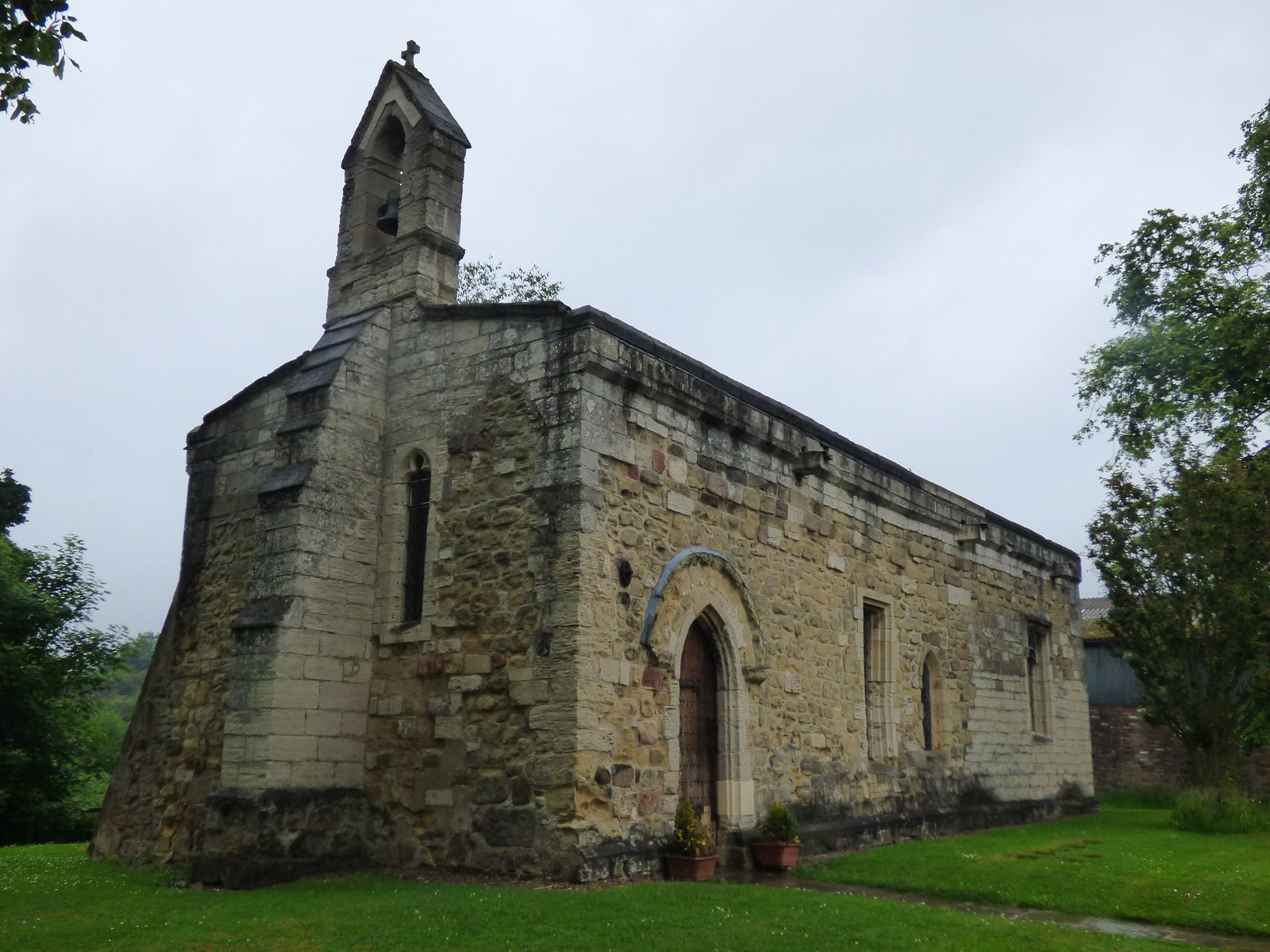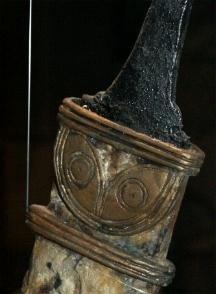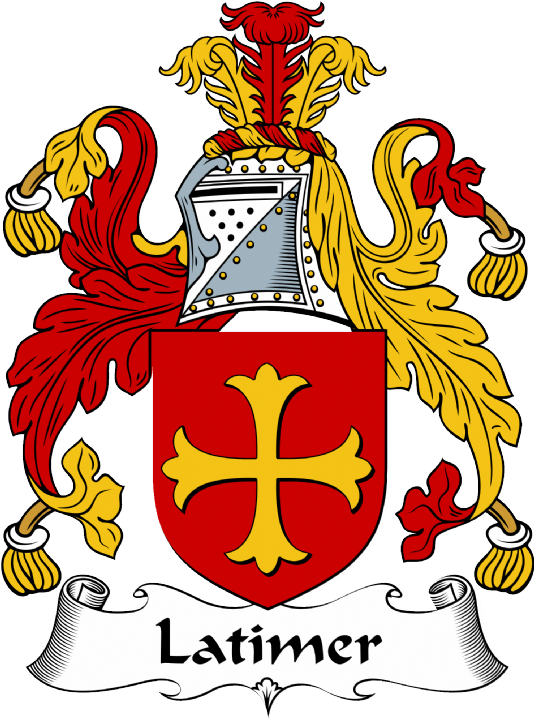Contents
Site Details:

The Chapel of St Mary Magdalen in Ripon, was founded by Archbishop Thurstan in the 12th century, it was initially part of the St Mary Magdalen Hospital, serving as a chapel for lepers and later for blind priests. This historical gem is the only remaining structure from Ripon's medieval hospitals, reflecting the architectural styles of the Early English Perpendicular period.
Perpendicular Style
The Early English Perpendicular period is a distinctive phase in English Gothic architecture, typically dated from the late 14th century to the 17th century. It is characterized by a strong emphasis on vertical lines and rectangular forms, which is reflected in the design of window tracery and wall panelling. This architectural style is unique to England and is considered the final style of English Gothic architecture. The Perpendicular period is marked by large windows with elaborate tracery that creates a grid-like pattern, often filled with stained-glass that floods the interiors with light. The arches are usually four-entered, which are wider and flatter than those found in earlier Gothic architecture. The period also saw the development of fan vaulting, an ornate form of ceiling construction that resembles an open fan and is considered one of the hallmarks of Perpendicular Gothic architecture. Notable examples of this style include King's College Chapel in Cambridge and the Henry VII Chapel at Westminster Abbey. The Perpendicular style's focus on linear clarity and the extensive use of glass signify a departure from the more ornate and curvilinear Decorated Gothic style that preceded it. The style's name itself—Perpendicular—highlights the vertical lines that dominate the structural and aesthetic aspects of these buildings. The design of the Chapel of St Mary Magdalen in Ripon, while rooted in the 12th century, incorporated elements that became characteristic of the Early English Perpendicular period several centuries later. This does not necessarily mean the chapel's design was innovative for its time, but rather that it was updated during a period when the Perpendicular style was fashionable.
Over the centuries, it has undergone several renovations, with significant restorations in the 15th century, the 17th century, in 1917, and between 1985 and 1990. The chapel's dedication to Mary Magdalene, often depicted as an outcast welcomed by Christ, symbolizes the sanctuary it provided to those marginalized by society. Today, it continues to be an active Anglican church within the benefice, deanery, and archdeaconry of Ripon Cathedral.
 Skeletal remains at the chapel
Skeletal remains at the chapel
During excavations in the 1980s, several skeletons were unearthed near the chapel. Notably, these remains were found without any burial containers or accompanying grave goods, which is characteristic of burials associated with leper communities.
This discovery aligns with the chapel's historical function as part of a leprosarium, offering care to those afflicted with leprosy. The absence of burial containers also suggests a utilitarian approach to interment, which was common in medieval times, especially for hospital sites like St Mary Magdalen's. These skeletal remains are a poignant reminder of the individuals who once sought solace and sanctuary within the chapel's walls.
Architectural Notes
The chapel's structure is predominantly built of hammer-dressed limestone, a testament to the masonry skills of the period. Its rectangular plan and single-cell design are characteristic of chapels of its time, providing a space that is both intimate and conducive to reflection.
The south doorway of the chapel is particularly noteworthy, featuring outer arches that are original to the 12th-century construction. This use of light orange sandstone provides a subtle yet striking contrast to the limestone, highlighting the entrance with historical significance.
The chapel's interior, though modest, is replete with architectural details that speak to its centuries-old heritage. The pointed arches and ribbed vaults are indicative of the Gothic influence, while the presence of a bell-cote suggests a practical approach to calling the faithful to service. Over the years, the chapel has seen several renovations, each adding layers to its architectural narrative.
The 15th-century restorations brought about significant changes, including the addition of windows with tracery that allowed light to filter into the sacred space, creating an interplay of light and shadow that enhances the spiritual ambiance. The 17th-century renovations further refined the chapel's features.
St Mary Magdalene Hospital
The St Mary Magdalene Hospital in Ripon, established in the early 12th century, was more than just a chapel; it was part of a larger complex designed to serve the needs of lepers and later, blind priests. The hospital, founded by Archbishop Thurstan, was a charitable institution that provided care for the sick and destitute, reflecting the Christian ethos of compassion and service.
Over time, the hospital expanded its facilities to better serve its community. Historical records indicate that the original structures included not only the chapel but also a leper house, accommodation for priests and sisters, and other ancillary buildings necessary for the hospital's operations. These would have included living quarters, a refectory, and possibly workshops or farming structures to support the hospital's self-sufficiency.
The chapel is the only complete fragment of Ripon's medieval hospitals to survive from the time of its foundation, serving as a physical reminder of the hospital's extensive past. The rest of the hospital complex has not survived the ravages of time, and what remains today is largely due to restoration efforts in the 15th century and later periods. The hospital's layout would have been typical of medieval leprosaria, with separate areas for different functions, including a space for medical treatment, a place of worship, and areas for the residents to live and work.
The hospital's evolution over the centuries saw changes in its structure and function. By the end of the 1300s, the separate leper house was demolished due to a decline in leprosy cases, and the hospital began to serve a broader segment of the needy. In the 16th century, following the dissolution of the monasteries, the hospital was reorganized as almshouses, which continued to serve the community for the next three centuries. This transition reflects the adaptability of the institution to the changing needs of society.
The hospital's administration was overseen by a Master, a position that came with its own house, garden, and orchard, indicating that there were additional structures associated with the administration of the hospital. The Master was a significant figure, often a prebendary of the College, and later, the mastership was held by notable figures such as Abbot Marmaduke Bradley, the last Abbot of Fountains Abbey.
In the late 17th century, the masterships of the hospitals of St Mary Magdalene and St John were amalgamated in the office of Dean of Ripon, suggesting that the administrative structures of both hospitals were closely linked. The Marquis of Ripon at the time also paid for new almshouses for the poor next to the new chapel, indicating further expansion and modification of the hospital's structures.
Today, while the chapel stands as the sole surviving structure from the medieval period, the history of the hospital and its various buildings is preserved in the records and memories of the community. The hospital's legacy is one of care and compassion, a testament to the enduring human spirit of charity and the importance of providing for those in need.
The Leper Hospital
The hospital in Ripon was not just a medical facility but also a religious institution, where a priest was appointed to say Mass daily for the patients, and sisters were tasked with providing food, clothing, and shelter to local lepers. This dual role of spiritual and physical care was typical of medieval hospitals, which served as both a place of worship and a refuge for the sick and needy.
As the hospital grew in importance, it attracted donations of money and land from wealthy benefactors, who believed that their contributions would aid their spiritual journey through purgatory. However, with wealth came the temptation of corruption, and there are records of funds being misappropriated by the Cathedral Canons, leading to interventions by the archbishops to recover the stolen assets.
The hospital's administration was overseen by a Master, a position that came with its own house, garden, and orchard, and was considered a desirable post due to the wealth and influence it commanded. Over time, lay brothers were also recruited to assist in running the hospital alongside the sisters.
Interestingly, the hospital's focus shifted over the centuries. By the end of the 1300s, leprosy had become less common, and the separate leper house was demolished due to a lack of patients. Nonetheless, the chapel and hospital continued to provide care and alms for the needy. In the 16th century, following the dissolution of the monasteries, the hospital was converted into almshouses, which continued to serve the community for the next three centuries.
Leprosy
Leprosy, also known as Hansen's disease, is a chronic infectious condition caused by the bacteria Mycobacterium leprae or Mycobacterium lepromatosis. The disease was first identified as a pathogen in humans by G.H. Armauer Hansen in Norway in 1873, marking a significant milestone in the understanding of leprosy. This discovery, which led to the disease being referred to as Hansen's Disease, was crucial for advancing the study of its transmission and treatment.
It primarily affects the skin, nerves, and mucous membranes, potentially leading to significant physical disabilities if left untreated. Symptoms can range from skin lesions and numbness to muscle weakness and eye problems, with severe cases resulting in the loss of extremities due to repeated injuries or infections.
The disease is not highly contagious and requires prolonged close contact for transmission, typically through respiratory droplets. Despite its low pathogenicity, leprosy has been a source of stigma throughout history, often associated with poverty and misconceived as a punishment for moral failings.
The genetic analysis of Mycobacterium leprae has provided significant insights into its evolution, spread, and interaction with the human host. The genome of M. leprae is characterized by reductive evolution, where many pseudogenes—nonfunctional sequences of genomic DNA—have been identified. This extensive genome decay is indicative of the bacterium's adaptation to a parasitic lifestyle, relying on its host for survival, which is also reflected in its slow growth rate and inability to be cultured in vitro.
Comparative genomic and phylogeographic analyses have revealed that M. leprae is an ancient disease-causing agent, with its spread reflecting the migrations of early humans. The genetic diversity of M. leprae is surprisingly limited, suggesting that all current strains are derived from a single clone. This limited variability is due to the bacterium's slow mutation rate and its long-term association with humans, which has led to a stable relationship between the pathogen and its host.
Studies have utilized variable number tandem repeats (VNTRs) and single nucleotide polymorphisms (SNPs) to investigate the genetic variability within M. leprae. VNTRs, though useful for epidemiological surveys, have shown variability in samples taken from different sites on the same patient, which may limit their utility for certain types of analysis. SNPs, on the other hand, have been instrumental in distinguishing between different strains of M. leprae, aiding in the understanding of its transmission and evolution.
The earliest recorded cases of leprosy date back thousands of years, with the first known evidence of the disease found in a 4,000-year-old skeleton in India. This discovery, detailed in a study published in the online journal PLoS ONE, represents the oldest archaeological evidence of leprosy and sheds light on its presence in prehistoric India.
Historical texts also reference leprosy, with mentions in the Bible and other ancient scriptures, indicating its prevalence across various cultures and regions. With the development of effective treatments in the 20th century, the disease has become curable, and the number of cases has significantly declined worldwide. Despite its ancient origins, leprosy remains a modern concern, with new cases still being diagnosed annually, underscoring the importance of continued research and public health efforts to combat this enduring disease.
Leprosy in England
The origins of leprosy in England are a subject of historical and scientific inquiry, with evidence suggesting that the disease was present in the country by the 4th century. It is plausible that early Christian visitors or settlers, among others who travelled to and from England, could have contributed to the introduction and spread of leprosy, given the patterns of migration and trade during that time. The disease, known for its chronic nature and long incubation period, could have been transmitted through prolonged close contact, which would have been common among travellers and religious communities.
The spread of leprosy in England coincided with a period of increased communication and exchange across Europe and the Mediterranean, facilitated by the Roman Empire's expansive network of trade and military routes. Christian missionaries and pilgrims, moving along these routes, were integral to the dissemination of religious beliefs and could also have been unwitting carriers of diseases, including leprosy. The monastic and ecclesiastical establishments that arose with the spread of Christianity would have served as focal points for both spiritual and social gatherings, potentially aiding in the disease's transmission.
Moreover, the role of early Christian visitors in the spread of leprosy is intertwined with the broader patterns of population movement during the early medieval period. The genetic analysis of Mycobacterium leprae, the bacterium responsible for leprosy, indicates that the disease likely originated in East Africa or the Near East and followed human migration routes, including those associated with trade and the slave trade. This aligns with the historical accounts of leprosy's prevalence in England by the 11th century, as the country was well-integrated into the network of European trade and pilgrimage by that time.
It is also worth considering that leprosy's presence in England could have been influenced by other factors, such as environmental conditions conducive to the bacterium's survival or the health and immunity of the population. The archaeological findings from various leper hospitals across England, including skeletal remains dating back to between 960 and 1030 AD, provide concrete evidence of the disease's long-standing impact on English society.
Additionally, a study suggested that Viking traders of squirrel fur might have brought a strain of leprosy to England, as a closely related strain was found in remains from England, Denmark, and Sweden.
Despite extensive efforts, no other animal carriers have been identified, although the bacteria were found in red squirrels in the UK. The consensus is that leprosy was likely transmitted through the air when someone with the disease coughed or sneezed, but other routes such as through the skin may also have been possible.
The English response to leprosy
The English response to leprosy during the medieval period was multifaceted, encompassing both care for those affected and measures to prevent the spread of the disease. Leprosy was a highly visible affliction, leading to significant physical disabilities and social stigma for those affected. The societal reaction to leprosy was complex; it was often viewed as a divine punishment for sin, yet those suffering from the disease were also seen as enduring purgatory on earth, thereby closer to God.
This duality influenced the establishment of leper hospitals, known as 'lazar' houses, which provided care and spiritual support. These institutions were typically located on the outskirts of towns or near major travel routes, facilitating the collection of alms and minimizing contact with the general population.
The earliest known leprosarium in England is believed to be St Mary Magdalen in Winchester, with evidence of leprosy found in remains dating between 960 and 1030 AD. By the end of the 11th century and up to 1350, at least 320 leper houses were established across England.
These houses were not places of total isolation; they functioned as part of the community, with lepers able to trade items, beg alms, and offer services such as praying for the souls of benefactors. The care provided in these institutions was both physical and spiritual, reflecting the Christian ethos of charity and compassion for the suffering.
The spread of leprosy in England is attributed to several factors. The movement of people, including pilgrims, traders, and soldiers, along with the growth of urban centres, likely contributed to the spread of leprosy. The response to leprosy in England, therefore, was not only about managing the disease but also about addressing the needs of those affected within the context of contemporary religious and social beliefs.
Leprosy in Northern England
The history of leprosy in the north of England, and across the country, is a reflection of the social and medical landscape of medieval times. Leprosy was a visible and prevalent condition by the 11th century, having entered England by the 4th century.
In the north of England, as elsewhere, leper hospitals became integral to the community, offering a combination of spiritual guidance and practical care. The leper hospital associated with St Mary Magdalen Chapel in Ripon is one such example, where the afflicted could receive both medical attention and religious solace. The archaeological discoveries at such sites, including skeletal remains, offer a poignant glimpse into the lives of those who lived with the disease.
The leprosaria played a crucial role in the societal management of leprosy, segregating sufferers to minimize spread while also providing a means for them to contribute to society through prayer and almsgiving. Over time, as leprosy became less common and medical understanding evolved, many of these hospitals transitioned to serve other purposes, such as almshouses.
Other leper hospitals
In North Yorkshire, aside from the Chapel of St Mary Magdalen in Ripon, there were other notable leper hospitals. For instance, the leper hospital of St Nicholas in York was a significant institution that could accommodate up to 40 people. It was the most important of York's four leper hospitals, the others being St Eligius at Monk Bridge, St Helen’s at Fishergate, and St Katherine’s at Scarcroft Road. These hospitals were strategically placed on the outskirts of towns or near major travel routes, facilitating the collection of alms and minimizing contact with the general population.
The architecture of these hospitals often included a chapel, which served as the spiritual centre for the community, and communal living quarters, contrary to the earlier belief that lepers lived in isolated cottages. The design of these spaces was functional, catering to the needs of the residents while also adhering to the ecclesiastical directives of the time, which called for the isolation of lepers from the healthy population.
The presence of leper hospitals in the region is indicative of the broader social and religious practices of medieval England. The care for lepers was not only a matter of health but also a reflection of the Christian ethos of charity and compassion for the suffering. The hospitals provided a sanctuary where the physical and spiritual needs of the lepers were attended to, and where they could live out their lives with a sense of community and dignity, despite the stigma associated with their condition.
The archaeological and historical records of these hospitals offer a window into the past, revealing the ways in which medieval society confronted disease and disability. The remnants of these institutions, whether in the form of architectural ruins or the artifacts unearthed through excavations, continue to inform our understanding of the social history of the region.
Site Gallery
Gallery Empty









